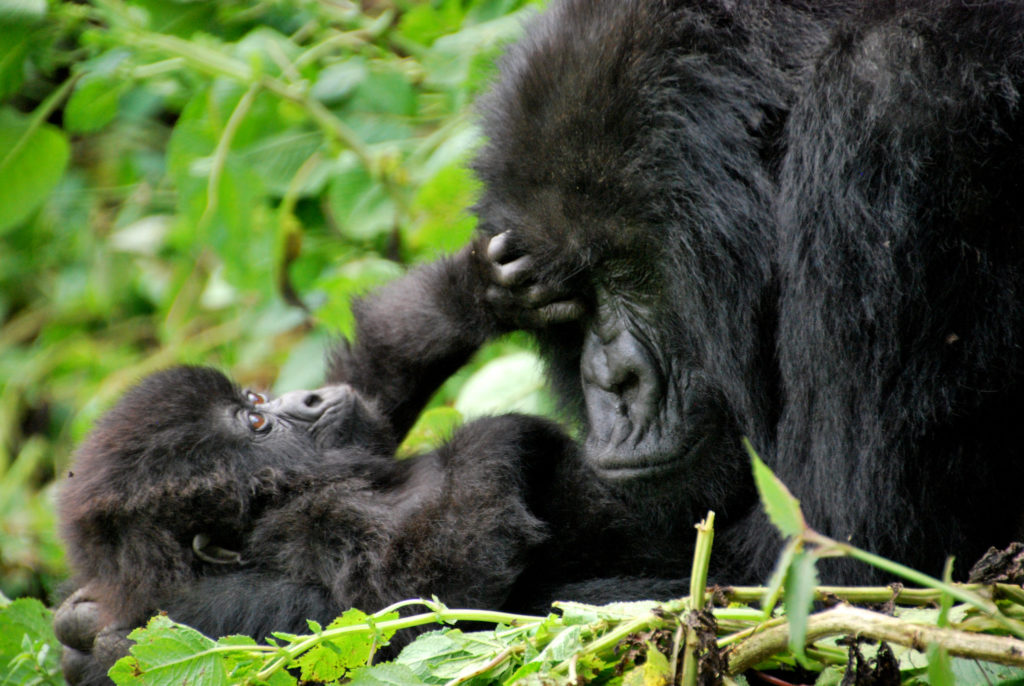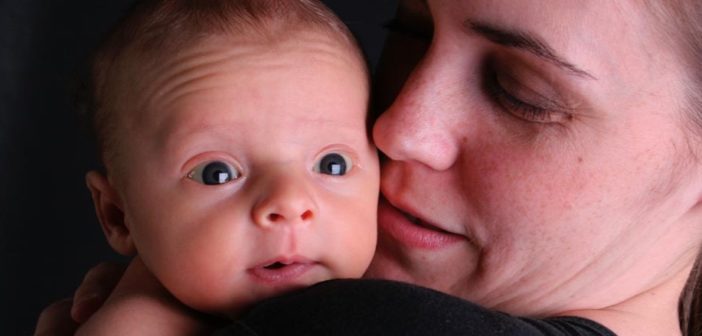We commonly see claims of successes and progress in the fights for animal rights and environmentalism. Such and such percentage of meat sales are being replaced by plant-based product sales, this or that endangered species is recovering, or a key watershed is now protected.
These claims are often misleading, painting a false picture of our relationship with the nonhuman world. Thanks to continued human population growth, the world is becoming crowded with billions more people in our lifetimes, and overall demand for meat and many other forms of animal exploitation are only increasing. According to the United States Department of Agriculture (USDA), in the U.S. alone, human beings were responsible for the deaths of 30.6 million adult cows and 487,700 calves, 118.2 million pigs, 2.24 million sheep and lambs and 8.9 billion chickens in 2017. And these numbers don’t reflect the billions of animals who die each year due to the degradation of their habitats caused by climate change.
While switching to a plant-based diet and making efforts to reduce our carbon footprints can help mitigate our impact on animals, we also know that these modest environmental successes are being dwarfed—on a scale of twenty to one in some cases—by the way population growth is degrading our environment. All of the benefits of what we do to alter our diets, or the energy grids we use, could be erased in the next half-century given massive volatility in worldwide demographics.
Fortunately, continued demographic explosion is not an inevitability. There is something we can do today to improve our relationship with the non-human world tomorrow – choose to have one fewer child.
If we care about animals, we should have smaller families
According to a study conducted by researchers at Lund University in Sweden and the University of British Columbia in Canada, living car-free reduces an individual’s annual carbon emissions by 2.4 metric tons, avoiding airplane travel reduces those emissions by 1.6 metric tons, and eating a plant-based diet reduces them by 0.8 metric tons. Having one fewer child, however, outpaces them all — reducing an individual’s yearly carbon emissions by nearly 60 metric tons.
We also know that nearly one million species face extinction due to climate change and other effects of human activity. By 2100 world population could vary by billions of people, depending on whether the average woman in the world today has one child more or one child fewer in her lifetime. If we choose to have a smaller human population, we offer non-human populations a greater chance of survival.

Our hesitance to talk about population
We know that smaller families are the key to protecting the human and non-human beings with whom we share the planet. Yet this approach is rarely discussed. Advocacy groups, including child welfare and human rights organizations, tread into dangerous waters by omitting the impact of population on their work, and pandering to a general public that prefers to keep the subject of procreative ethics taboo. But why is talking about population so unpopular?
For one, babies are big business. Population growth is fueled, at least in part, by elite and powerful actors who see children as future consumers, workers and taxpayers. These interests view population growth as a way to fill up shopping malls, regardless of their ecological impact or the horrors they may inflict on non-human animals. Growth advocates therefore encourage us to bring babies into the world based on our own desires as parents, without thought for whether we can meet the needs of our own child, or how our child’s presence may impact the needs of the other human and non-human beings with whom they will share the planet. In doing so, these advocates encourage us to bring new lives into the child welfare and other systems from which we are desperately trying to pull existing children. And they do this despite the fact that each new child will place a greater strain on the ecology around them. It’s that move—to create lots of people with little investment in individuals and little regard for equity or impact on our ecology—that animal advocates have to overcome.
The United Nations has been complicit in this trend. By maintaining the position that the act of creating another person—or six—is a personal and private matter to be left to the parents to decide, the United Nations ignores the impacts that each new human will have on other children, as well as their impact on the nonhuman world. But if we care about protecting animals and restoring our environment we have to change this framework. We must change course on who we, as a species, are becoming.
Shifting from consumers to citizens
It’s not just about numbers. Humans’ effects on the world around them also depend on their characteristics, like empathy and their disposition to mistreat others, as well as their relative economic and social position. These factors are interrelated and inseparable, and their inevitable interaction with population size will largely determine the lives of humans, nonhumans, their habitats and our shared ecology.
By having smaller families, we can shift the focus from producing more consumers, to investing in future citizens. Having fewer children allows families, and society at large, to invest more in each baby that is born. By providing each child with greater access to health care, early childhood education, and other essential resources that children need to thrive, we can help eliminate human inequality. And children born to communities that have the time and resources to invest in teaching them to be compassionate, empathetic beings are more likely to be good stewards of the natural world. They are also more likely to instill the same values in their children, creating a positive feedback loop. This shift not only benefits us as human beings, it also benefits the non-human animals affected by our decisions.
We also know that individuals are more likely to participate in democracy when their voices can be heard and when they feel that they can make a difference. But when populations grow, each person has less of an influence, and therefore, less incentive to participate in democracy. The U.S. had four million people when its political system was designed. Today it has 300 million. As the population continues to grow exponentially, can we really say that our elected officials – or one president – truly represent our views? With each new person added to the equation, the voice of every other person is watered down, until ultimately, democracy is degraded.
Slowing population growth can ensure that we’re not simply filling shopping malls with new consumers, but that we are instead filling townhalls with educated and engaged citizens. Citizens who have the power to make better laws for governing themselves – as well as laws that are more inclusive, fair, and respectful of non-human animals. In this future, babies are not economic inputs to be counted like beans, but rather future citizens who are equipped to influence and improve the rule of law.

Is this realistic?
All of this may seem excessively altruistic and infeasible to implement, relative to the ease of selling plant-based burgers to health-minded consumers and other simple and readily available means to saving animals. That is incorrect, and it says a lot about how short-sighted our human perception is that we think about altering our relationship with the nonhuman world in terms of food and consumer behaviors, rather than politically and existentially. Humans have already begun to engage in the most important behavioral change—for animals and the environment—in the history of our species, having more than halved our average family sizes in the past century. The move towards smaller family sizes is being debated in mainstream media, and benefits to both humans and nonhumans in terms of both welfare and autonomy are incomparable. Younger generations seem eager to embrace the change.
We only need to shift the norm a little bit more to create massive change – a change that is not consumer-based, but human rights-based. That shift pushes in the opposite direction of many current proposals to create as many people as possible who serve in economies that prioritize consuming nature. Instead, it pushes in the direction of smaller, highly developed, and inclusive populations.
If we focus on family planning we can sync the restoration and protection of the nonhuman world with human welfare and autonomy, or the process of investing more in each child. This would ensure equal opportunities in life for each child, a meaningful voice in making the rules under which they live, and the freedom from others only possible in nature.
What can we do today?
While catalyzing change for generations to come may seem like a pie in the sky strategy, there are concrete steps we can be taking today to create the change we want to see in the future. In the realm of traditional human rights, the Secretary General of the United Nations holds the key to beginning the transition. He can turn that key through simple informal statements that correct his predecessors’ mistakes, and clarify the intricate balance of human rights and obligations surrounding procreation, equity and the restoration of the nonhuman world. In essence, he can move from treating family planning as a matter left to parental preference, to one oriented around the needs of future children and the needs of our shared world. This view would be consistent with the Children’s Rights Convention, and the right to equal opportunities in life. The United Nations could also restructure the Universal Declaration of Human Rights to prioritize the intergenerational maximization of social self-determination rather than focusing on economic growth.
Domestically in the United States, this change could begin with amendments to the Green New Deal, and comparable state legislation that enshrines a constitutional right for all children to have a fair start in life and the right of all humans to the restoration of nature. What Singer and so many others ignored was the need for an antecedent organizing norm, or the most fundamental and existential duty of being sufficiently other-regarding people, to actually constitute legitimate societies. That has to come first, and in the long run is what matters most for non-humans.
While we are changing the way we plan families, we can also do this more immediately by addressing the fact that in the United States the term “animal law” is actually a misnomer. Most animal law excludes the majority of animals it seeks to protect, be they farmed animals or animals used in research. We can change the basic status in environmental law and policy of non-humans and their habitats from one in which they are viewed as labor and property, to one of liberated personhood. That standard – of a liberated nonhuman world – ought to be the baseline for environmental protection law and policy. It is also the subject of federal litigation seeking to establish a right to a restorative standard of nature as a human right. The process can be accelerated by including nonhuman personhood requirements in the emerging local and state rights of nature movement.
We can also seek to actually enforce the laws we already have on the books. Consider the notorious cases of 597t regarding confined animals in California, or New York’s cruelty law as applied to the largest producer of foie gras in the country. Also consider that Iowa’s large pork producer laid off thousands of workers due to coronavirus, and then cruelly suffocated thousands of “excess” pigs that it did not have the labor to slaughter. Despite blatant violations of the law, involving hundreds of millions of animals, virtually the only prosecutions to ever take place were of activists investigating and revealing the cruelty. This travesty is everywhere, leaving us outside of the rule of law, and makes animal law a vapid concept.
The repeal of these exemptions, the removal of legislative authority from corrupt concentrations of power, the creation of effective civil causes of action for animal cruelty, the development of related amendments to enhance corporate criminal liability – all of these move us towards sidestepping our current system of relying on prosecutors who are at best disinterested, or at worst politically vulnerable and biased, and finally holding accountable those responsible for the greatest crimes.
And finally, to bring us around to the beginning, the humane education movement could expand its focus and become, in effect, a humane family planning and education movement. Again, fundamental change means changing our existential relations with the nonhuman world. Humane education by itself offers little change, ignoring the preceding waves of people we seek to educate. The law that creates us and largely determines our behavior is the real law in a sense that matters very much for animals, relative to the largely symbolic and traditional form of law we are accustomed to. Taking animal rights seriously – for both humans and nonhumans – means starting at the beginning, limiting the power and influence our species exerts in the universe. We must also organize ourselves as truly democratic communities, positioned to create and enforce the laws that protect the vulnerable – both in terms of human and non-human beings. And while we reform who we are as a species, through better and inclusive family planning, it also means reforming existing systems of environmental and animal law that treat all animals as more than a resource, and treat them equally.
One way to simply state the point of this piece would be to say that we have to first become a people, in quantity, quality, and relative positioning, so as to be capable of answering the core question of animal ethics: what deprivation of nonhumans’ autonomy and welfare is ever justified? Right now, given the state of the law, it seems silly to think we are that capable, or that we can even take that question seriously, as our population grows, drives the 6th extinction, and overruns what’s left of the nonhuman world.
Featured image: a mother and baby. Image credit makelessnoise, CC BY-SA 2.0.






1 Comment
Pingback: Humane Families: Towards Existential Justice and Freedom - Rewilding